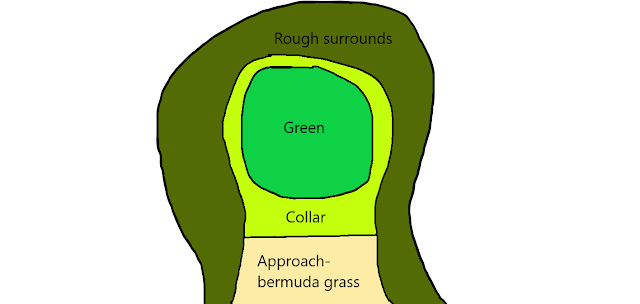Due to power and internet outages, this report was not posted until Monday afternoon. Therefore, it was not sent as part of the regular blog email at 10am. Thank you.
This past week we had a list of many small tasks to keep us
busy. some of these things are minor or are of very little consequence to
golfer. But many small, seemingly minor jobs added together help to improve the
entire operation.
First, we cleaned and organized our chemical storage area
for the season. We must wait until we are past the threat of cold temperatures
before we can accomplish this (though this coming week has a couple of cold
nights forecast). Once we are through the worst, we bring our liquid products
from inside the warehouse and organize them by type and place them in their
respective spots for easy access during the year. We also purchased another
pallet rack for our dry chemical storage. We now have 2 racks that we can put
our less frequently used products up on to free up more space below. Having
these areas clean and organized is helpful during the season when things get
hectic.
We also had a nice rain day mid-week. This was perfect
timing for new sod that had been laid at the lower
driving range tee and on the collars.
It was also perfect timing to trim sprinklers, drains, valve boxes, and yardage
plaques. Keeping sprinklers and yardage plaques trimmed and clear helps golfers
to quickly gain information regarding the distance to the flag. It is also much
more attractive when neatly manicured. Keeping the drains and valve boxes
trimmed is more for the Grounds department’s benefit. Allowing grass to grow
over the drains reduces their effectiveness and can lead to puddling and poor
draining of water. The valve boxes are the locations of all the shut-off and
isolation valves for the irrigation system. We keep these clear so that they
are easy to locate. If we have an irrigation break and water is gushing out
onto the course, we need to be able to quickly find and access the correct
valve box. If it is overgrown by grass this becomes nearly impossible.
After the new sod was complete at the lower driving range
tee, there was a little extra leftover. We took this opportunity to spot-sod a
few locations on the property. We almost always have a list in the shop of
miscellaneous areas to sod. This list comes in handy in times just like this:
when another project leaves a small surplus of sod, we must quickly find a place
for it so that it is not wasted. We repaired a few green surrounds areas, some
tee walk-on areas, as well as 3 stump holes at tennis. We managed to find a
place for all the extra sod.
Lastly, we started our annual spring bunker sand addition
work. Every spring we rearrange the existing sand in bunkers so that it is
evenly spread within the bunker. As part of this process, we record which
bunkers need additional sand so that there is adequate depth. In most cases,
nearly all greenside bunkers need at least some new sand, but we check
everything to be sure. We dispersed a full load of bunker sand last week and we
have 2 more coming this week to finish up.
Each of these on its own is no enormous change or
improvement to the course, but taken together, along with our other practices,
they can make a difference.
Etiquette Reminder of the Month
When parking your cart at a tee or green, please keep all 4
tires on the path
Also, as part of a Golf Committee initiative to improve
course etiquette, we have included links to videos teaching proper on course
etiquette. Please take a moment to watch:
Ball
Marks - How to properly repair
See you on the course!
Joe
jvillegas@bwrc.org










